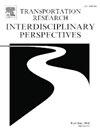农村地区能否从高铁投资中受益?建设达拉斯-休斯顿线路的分布式经济影响
IF 3.9
Q2 TRANSPORTATION
Transportation Research Interdisciplinary Perspectives
Pub Date : 2024-09-01
DOI:10.1016/j.trip.2024.101234
引用次数: 0
摘要
高速铁路(HSR)投资已在全球许多地区显示出巨大的经济效益。然而,人们一直担心高铁的发展可能会对高铁沿线的农村地区造成不公正的影响。在美国,来自农村土地所有者的阻力是导致众多高铁项目延迟或脱轨的主要因素。了解农村地区是否以及如何从高铁投资中受益,有助于促进项目的及时交付,并为辅助决策提供信息,以实现更广泛的社会效益。本文介绍了美国得克萨斯州达拉斯-休斯顿高铁线路的案例研究,该项目由得克萨斯中央铁路有限责任公司(Texas Central Railroad, LLC)提议,私人投资总额达 160 亿美元。该研究运用多区域投入产出(MRIO)模型,估算了投资达拉斯-休斯顿高铁线路的经济影响,并研究了影响在项目沿线农村各县的空间和行业分布情况。由私人投资的达拉斯-休斯顿高铁项目在经过长达十年的努力后停滞不前,这在很大程度上是由于沿线农村地区的反对。最近,美国铁路公司与德克萨斯州中央铁路公司合作成立,重新燃起了重振高铁项目的希望。本研究的结果对美铁-德州中央铁路公司制定战略,解决高铁建设对城乡影响不平衡的问题,以最终实现项目成功具有参考价值。本文章由计算机程序翻译,如有差异,请以英文原文为准。
Can rural counties benefit from high-speed rail investments? The distributive economic impacts of constructing the Dallas-Houston line
High-speed rail (HSR) investments have demonstrated significant economic benefits in many regions around the world. However, there have been ongoing concerns over the potential unjust effects of HSR development on the rural areas where HSR routes traverse. In the United States, resistance from rural landowners is a major factor that has delayed or derailed numerous HSR projects. Understanding whether and how rural areas may or may not benefit from HSR investments helps facilitate timely project delivery and inform supplementary policymaking to achieve broader societal benefits. This paper presents a case study of the Dallas – Houston HSR line in Texas, USA, a proposed project with private investments totaling $16 billion from Texas Central Railroad, LLC. Applying Multi-Regional Input-Output (MRIO) modeling, the study estimates the economic impacts of investing in the Dallas-Houston HSR line and examines the spatial and sectoral distributions of the impacts across the rural counties along the project alignment. The privately funded Dallas – Houston HSR project stalled after a decade-long effort, largely due to opposition from the rural counties along the line. The recent formation of the Amtrak-Texas Central partnership has brought back hope to revive the HSR proposal. The findings of this study are informative for Amtrak-Texas Central to develop strategies that address the unbalanced rural–urban impacts of constructing the HSR line for ultimate project success.
求助全文
通过发布文献求助,成功后即可免费获取论文全文。
去求助
来源期刊

Transportation Research Interdisciplinary Perspectives
Engineering-Automotive Engineering
CiteScore
12.90
自引率
0.00%
发文量
185
审稿时长
22 weeks
 求助内容:
求助内容: 应助结果提醒方式:
应助结果提醒方式:


